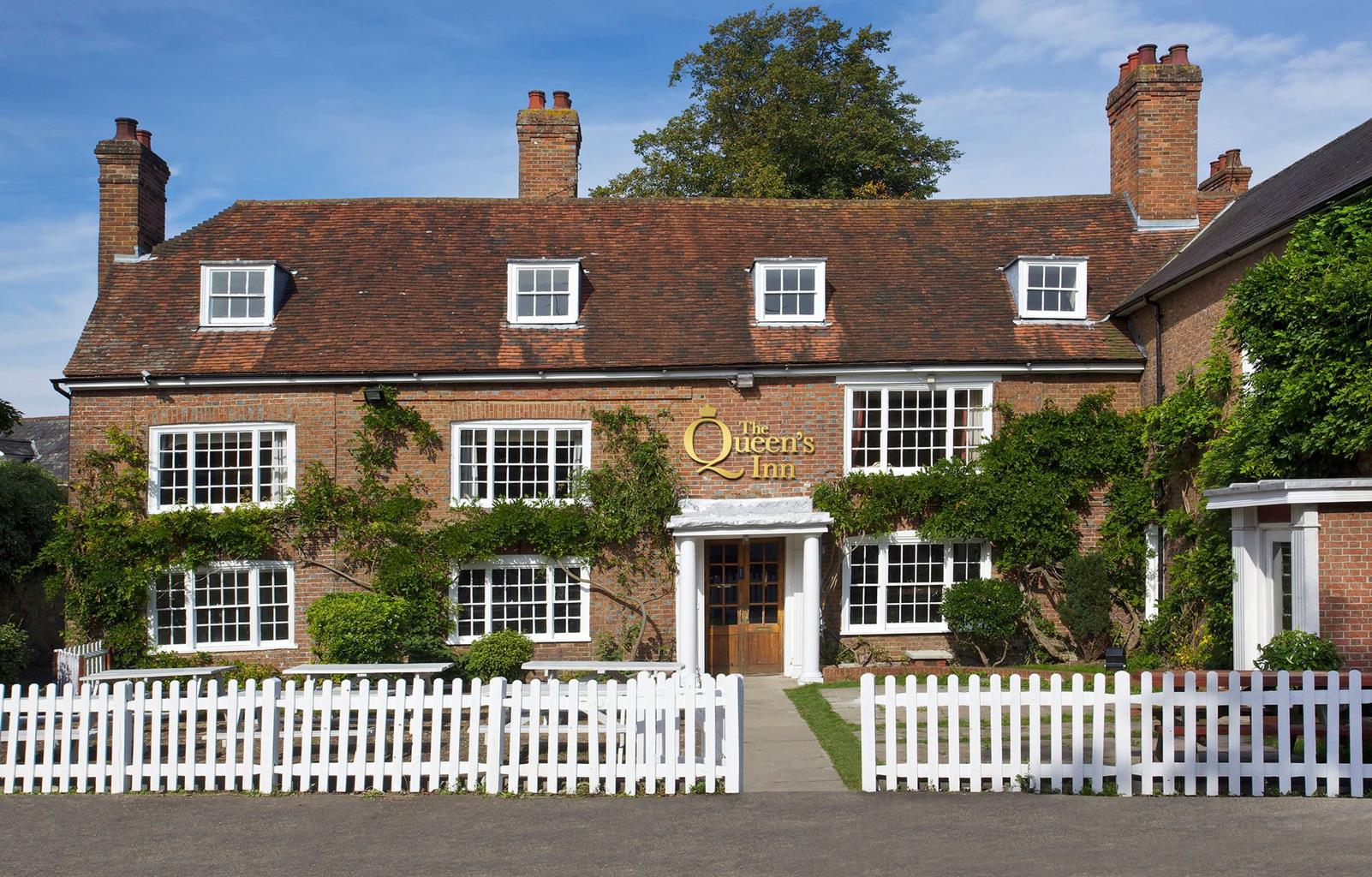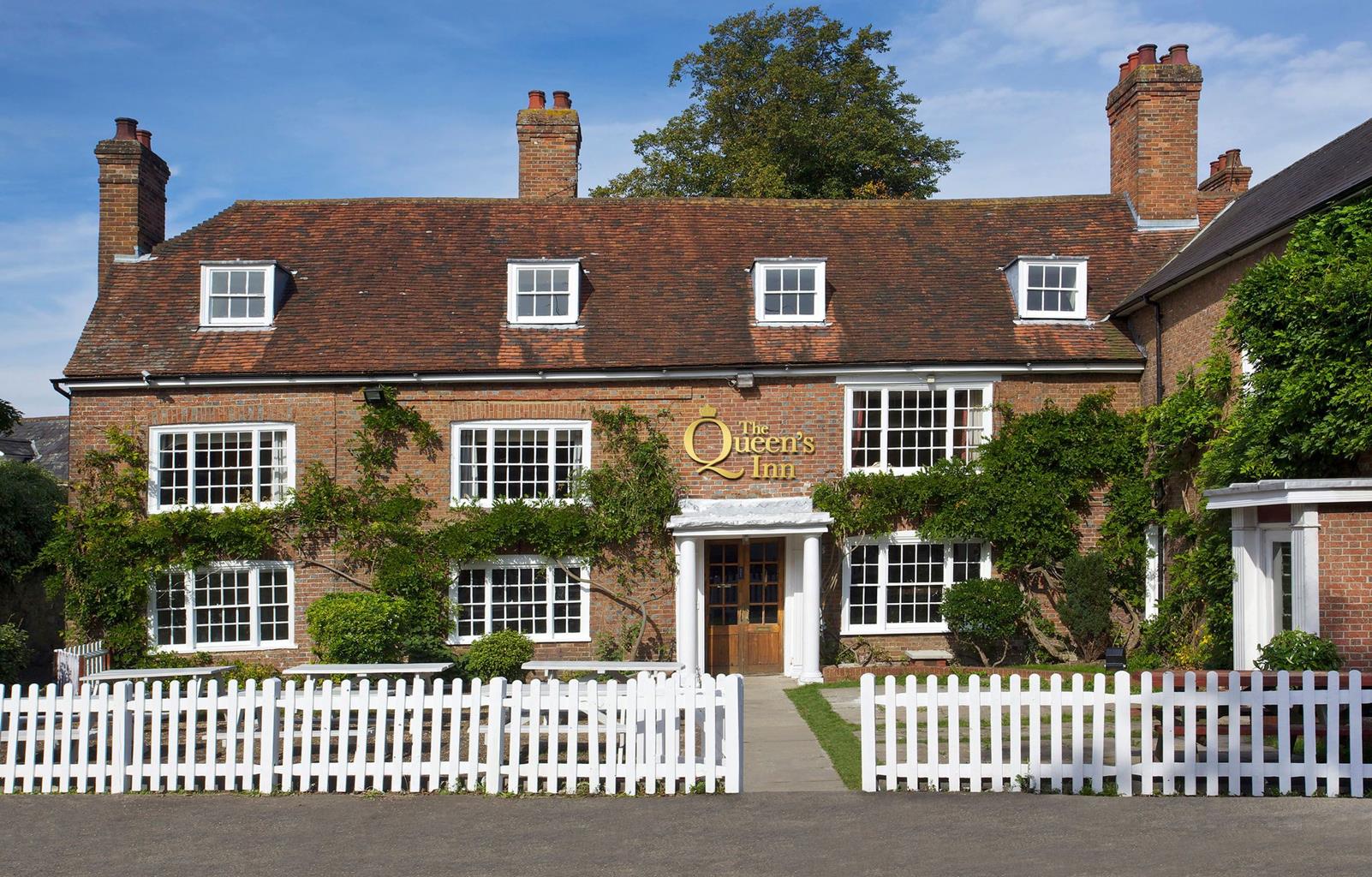Located in a rural location close to Rye, Knelle Dower is converted barn is in a prime location…
Great Dixter's gardens

A pleasant walk on the Sussex/Kent border, highlighting the skill and creativity of a famous architect and a gifted gardening writer.
3 miles (4.8kms)
About the walk
Deep in the tranquil, rolling countryside of East Sussex, close to the Kent border, lies the wonderful Great Dixter, one of the county’s smaller and more intimate historic houses. Built in the middle of the 15th century and later restored and enlarged by Sir Edwin Lutyens, Great Dixter is a popular tourist attraction as well as a family home.
These days this fine Wealden hall-house is owned and cared for by the Great Dixter Charitable Trust, which was set up by the late Christopher Lloyd, the gardening writer, who died in 2006. In 1910 Christopher’s father, Nathaniel, had instructed Lutyens to make major changes to Great Dixter, which at that time was in a poor state of repair. His main task was to clear the house of later alterations, and the work was undertaken with great sensitivity. But Lutyens didn’t stop there. While all the restoration plans were beginning to take shape he and Nathaniel Lloyd seized on the opportunity to improve and enlarge the house. A complete timber-framed yeoman’s hall at Benenden in Kent, scheduled for demolition, was skilfully dismantled and moved to Great Dixter, adding an entire wing to the house.
One of Great Dixter’s most striking features is the magnificent Great Hall, the largest surviving timber-framed hall in the country. The half-timbered and plastered front and the Tudor porch also catch the eye. The contents of Great Dixter date mainly from the 17th and 18th centuries and were collected over the years by Nathaniel Lloyd. The house also contains many examples of delicately fashioned needlework, which were completed by his wife Daisy and their children.
A tour of Great Dixter doesn’t end with the house: the gardens are equally impressive. Christopher Lloyd spent many years working on this project, incorporating many medieval buildings, establishing natural ponds and designing yew topiary. The result is one of the most exciting, colourful and constantly changing gardens of modern times. As with the house, plans were drawn up to improve the gardens, and here Lutyens was just as inventive. He often used tiles in a decorative though practical manner, to great effect. At Great Dixter he took a chicken house with crumbling walls and transformed it into an open-sided loggia, supported by laminated tile pillars.
The walk begins in Northiam, and heads round the edge of the village before reaching the house at Great Dixter. Even out of season, when the place is closed, you gain a vivid impression of the house and its setting. Passing directly in front of Great Dixter, the route then crosses rolling countryside to join the Sussex Border Path, following it all the way back to Northiam.
Walk directions
Turn right out of the car park and walk along Fullers Lane towards St Mary’s Church. Take the path on the left, signposted to Goddens Gill, and keep to the right edge of the field. Go through a gate in the corner; away to the right you can see an oasthouse. Make for a path on the far side of the field and follow it between fences towards a thatched cottage.
Go through a gate and turn left to follow the road to the A28. Bear diagonally left across the A28 and follow Thyssel Lane, signposted ‘Great Dixter’. Turn right at the crossroads, following Dixter Road.
Pass roads called Chapel Field and Higham Lane on the left, and continue to follow the signs for Great Dixter. Disregard a turning on the right (Dixter Lane) and go straight on, following a path between trees and hedges, parallel to and on the right side of the main drive to the house
Pass the toilets and go between two oaks to a cattle grid. Cross the stile just to the left of it and follow the path, signposted ‘Quentin’s Way’. Follow the waymarks and keep left along the hedge. Go through a kissing gate in the field corner and then head diagonally down the field slope to the next kissing gate. Follow the clear path down the field slope in line with the left-hand pylon in the distance
At the bottom of the field, head right for a footbridge and then turn left to join the Sussex Border Path. The path skirts the field before disappearing left into some woodland. Emerging from the trees, cut straight across the next field to a footbridge. Keep the woodland on the left and look for a gap in the trees to your left. Cross a stream to a kissing gate and then bear right. Follow the right edge of the field and keep on the Sussex Border Path until you reach the road.
Cross over the lane to a drive. Bear immediately left and follow the path to a stile. Pass alongside woodland and then veer slightly away from the trees to a gap in the boundary (Northiam church spire is now visible ahead). Go slightly left on the path up the field slope. Take the first footpath on the right and follow it to a gap in the field corner. Cross a footbridge under the trees and continue along the right-hand edge of the next field to join a drive. Bear left and follow it to the A28. Cross over to return to the car park at Northiam.
Additional information
Field paths and quiet roads
Undulating farmland and stretches of woodland
Dog stiles near Great Dixter and on Sussex Border Path
OS Explorer 125 Romney Marsh, Rye & Winchelsea
Car park on corner of Fullers Lane and A28, Northiam
Great Dixter, seasonal opening
WALKING IN SAFETY
Read our tips to look after yourself and the environment when following this walk.
Find out more
Also in the area
About the area
Discover East Sussex
East Sussex, along with its western counterpart, is packed with interest. This is a land of stately homes and castles, miles of breezy chalk cliffs overlooking the English Channel, pretty rivers, picturesque villages and links to our glorious past. Mention Sussex to many people and images of the South Downs immediately spring to mind – ‘vast, smooth, shaven, serene,’ as the writer Virginia Woolf described them. She and her husband lived at Monk’s House in the village of Rodmell, near Lewes, and today, her modest home is managed by the National Trust and open to the public.
There are a great many historic landmarks within Sussex, but probably the most famous is the battlefield where William, Duke of Normandy defeated Harold and his Saxon army to become William the Conqueror of England. By visiting Battle, near Hastings, you can, with a little imagination, picture the bloody events that led to his defeat. East Sussex’s pretty towns such as Lewes, Rye and Uckfield have their charms, while the city of Brighton offers museums and fascinating landmarks, the best-known and grandest feature being the Royal Pavilion.
Nearby stays
Restaurants and Pubs
Nearby experiences
Recommended things to do
Why choose Rated Trips?
Your trusted guide to rated places across the UK
The best coverage
Discover more than 15,000 professionally rated places to stay, eat and visit from across the UK and Ireland.
Quality assured
Choose a place to stay safe in the knowledge that it has been expertly assessed by trained assessors.
Plan your next trip
Search by location or the type of place you're visiting to find your next ideal holiday experience.
Travel inspiration
Read our articles, city guides and recommended things to do for inspiration. We're here to help you explore the UK.














